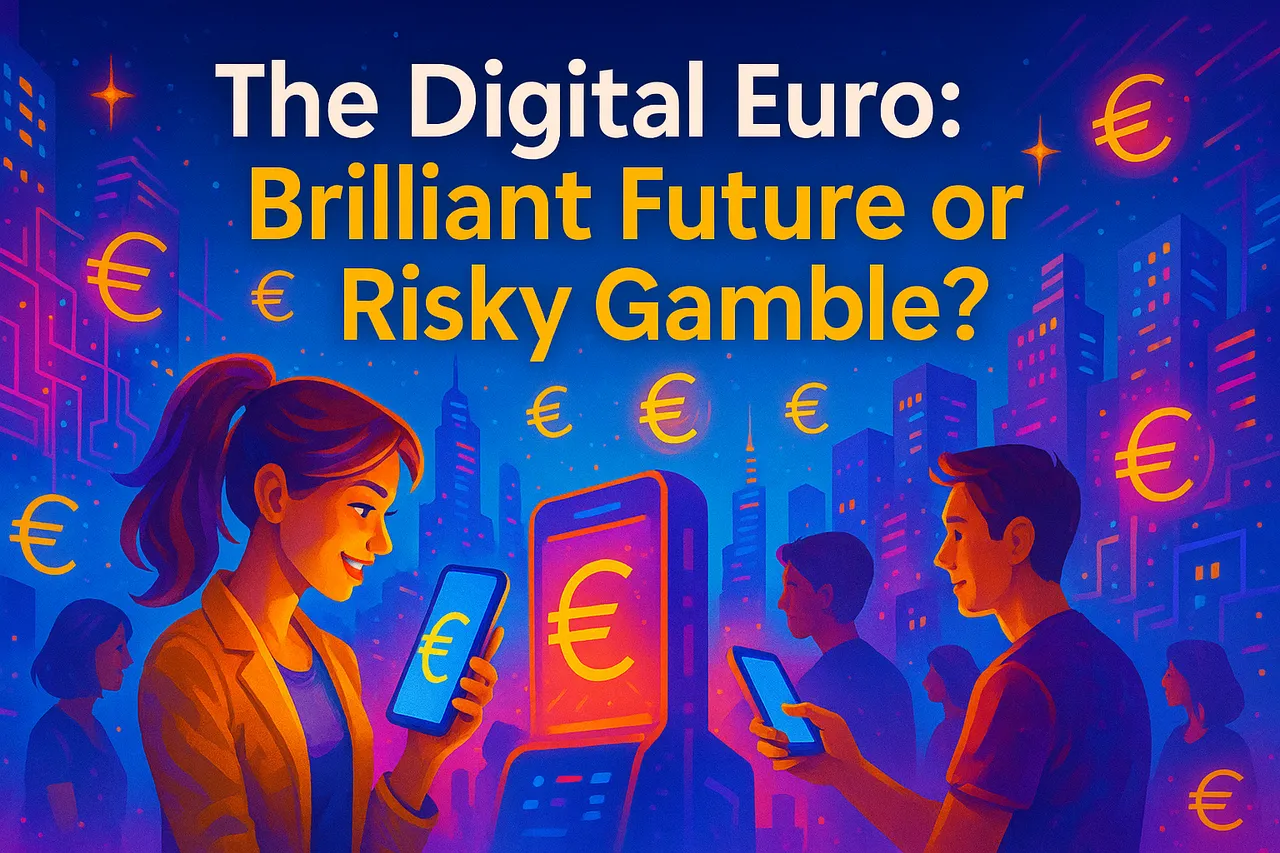
Image created with Leonardo AI and edited in Photoshop
The future of money seems to be dressed in pixels. Europe is already taking its first steps toward its own digital currency, and among the companies chosen to help build that infrastructure is Diusframi, a Spanish firm that until recently was unknown outside the financial sector and is now positioning itself as one of the main players in the digital euro project.
The news is seemingly simple: the European Central Bank (ECB) selected Diusframi as one of nine companies across Europe that will participate in testing and technical development for what could be the digital equivalent of the euro we carry in our pockets. But, as is often the case, beneath this apparent simplicity lies a complex web of questions, possibilities… and risks that should be addressed head-on.
But what exactly is the digital euro?
A digital euro is like having a virtual currency on your phone; it is issued directly by the Central Bank, without the need for intermediaries like traditional banks. But don't confuse it with a cryptocurrency (these emerge in the world of decentralized finance, outside of state control), but rather a new kind of traditional money, with official backing and quite ambitious ideas: making payments faster, improving financial inclusion, and offering a modern alternative to physical cash.
Diusframi will not only be testing whether this system works from a technical standpoint—for example, whether automatic payments can be made under certain conditions—but will also explore how to make this digital money accessible to everyone: people without bank accounts, older people who don't use smartphones, or rural areas where internet access is limited.
So far, everything sounds great. But there's one detail that can't be overlooked: electricity.
The same week Diusframi's participation was announced, Spain experienced a massive blackout that left many areas of the country literally in the dark. And with the blackout, we learned an old lesson: without electricity or internet, there's no digital payment. No cryptocurrencies, no QR codes, no online banks. Only cash, the kind we carry in our wallets, continued functioning as if nothing had happened.
This episode highlighted a great paradox: while investments are being made to create ultra-modern payment systems, all it takes is a storm, a breakdown, or a cyberattack to leave us cut off from communication and unable to make purchases. The ECB, fortunately, is no stranger to this risk, and that's why one of the most important lines of work for the digital euro is its offline functionality.
This means that, even without an internet connection, digital payments could continue to be made if the devices—the buyer's and the merchant's—have sufficient battery power. Sounds reasonable, right? But it also raises questions: How many stores have terminals with batteries that can last for hours without electricity? And how many citizens will be able to charge their phones in the midst of a widespread blackout that lasts a long time?
The digital euro, in its most optimistic version, aims to be as practical as cash, but with the speed of digital. However, if the system fails, the risk is that we won't be able to buy even a simple loaf of bread.
Cash: old, yes, but irreplaceable
Amid this technological frenzy, physical money remains the great resister. In Spain, more than 60% of purchases in small businesses are still made with cash. Not only out of habit, but out of necessity: many older people don't use apps, and in rural areas, internet access is still intermittent.
Furthermore, cash has something that no digital system can offer with equal force: anonymity and autonomy. When you pay with cash, no one records what you bought, when, or where. There are no servers storing your transactions or algorithms cross-referencing your data. In an increasingly surveilled world, this becomes a value of resilience.
We must also remember something basic: cash doesn't crash, the server doesn't go down, it doesn't need a battery or updates. It just works. That's why more and more voices are calling for its use to be protected by law. Not to curb innovation, but so that we have the freedom to choose how and with what we pay.
Between digital utopia and tangible reality
What's at stake with the digital euro isn't just a new payment tool. It's a cultural shift. A transition to a world where money will be increasingly invisible, more programmable, but also more dependent on networks, devices, and decisions beyond our immediate control. Not to mention control by large financial institutions and governments.
The work of companies like Diusframi will be key to making this new system robust, inclusive, and trustworthy. But it would be naive to think that all problems will disappear with it. Because, As history shows, every time a society has placed all its trust in a single economic, political, or technological model, reality has been there to remind it that diversity is always the best defense.
So let's applaud innovation. But let's also keep some coins and bills in our pockets in case we're caught in a blackout.
Original text created in Spanish and translated into English with Google Translate.